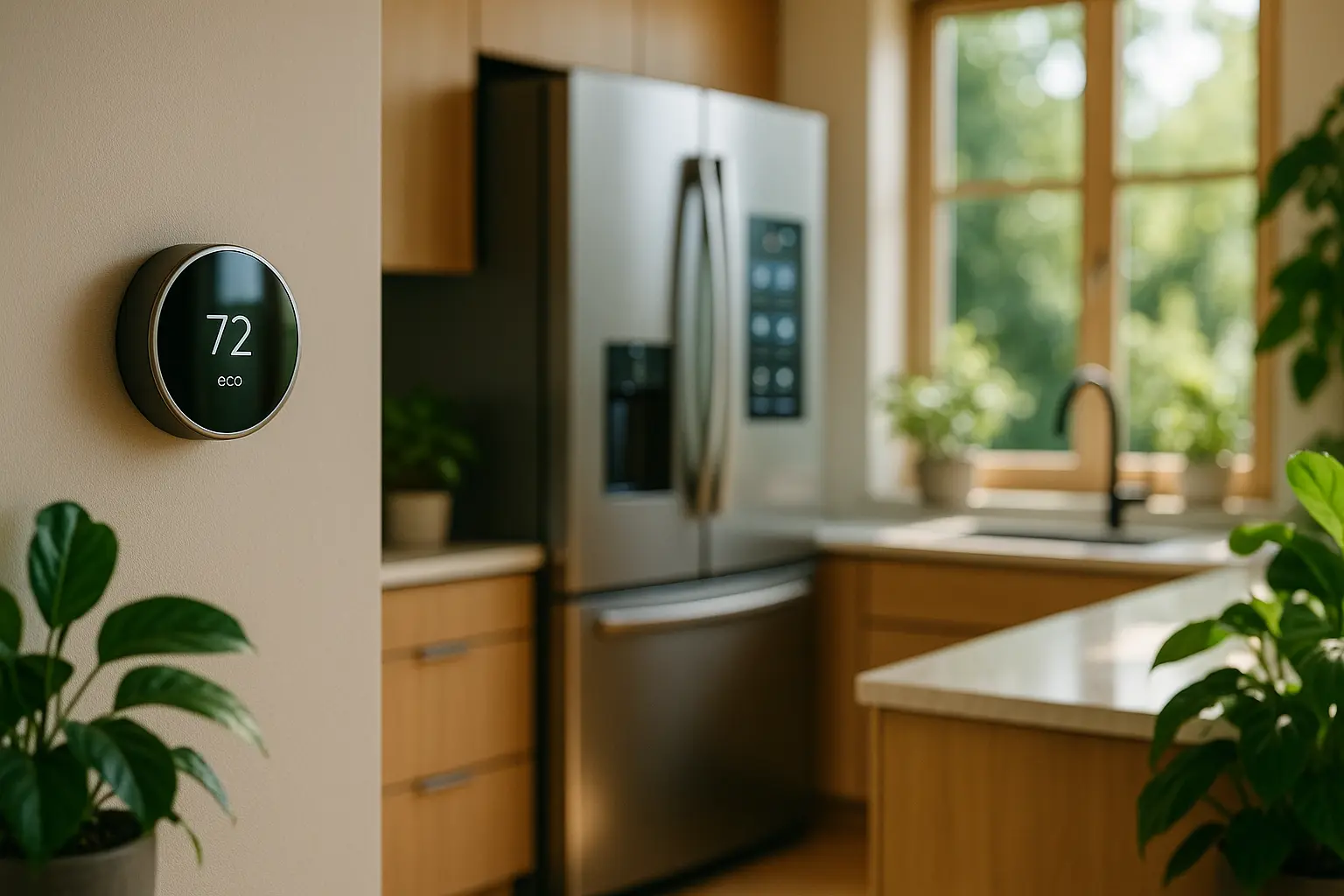In today’s rapidly evolving world, where technology is reshaping every aspect of our lives, the concept of a smart home has transcended mere futuristic imagination to become a tangible reality. Amidst the plethora of innovations, one theme resonates strongly in the hearts of environmentally-conscious individuals: energy efficiency. Indeed, automated homes offer a tantalizing promise of managing energy consumption in a way that not only benefits the planet but also saves on household expenses. This article delves into the realm of smart energy systems, exploring how they transform our homes into paragons of efficiency and control.
Embracing Smart Technology for Energy Management
As I step into the world of smart homes, the first revelation is the seamless integration of technology that effortlessly enhances our daily living. These systems are designed to manage energy consumption with precision, reducing unnecessary wastage and optimizing power usage. With the rise of smart technology, we can control various household appliances remotely, ensuring they operate only when needed.
Imagine waking up on a chilly morning to a home already warmed to your preferred temperature. This is made possible through smart thermostats which learn your schedule and adjust settings accordingly. These devices take into account occupancy, outdoor weather, and personal preferences, ensuring utmost comfort while minimizing energy usage.
Moreover, smart lighting systems play a pivotal role. By using sensors, they adapt to the natural light available, turning on and off as one moves through the rooms, and adjusting their brightness based on the time of day. This doesn’t just enhance convenience; it also contributes significantly to energy savings.
What stands out is the ability to monitor and control energy consumption through intuitive applications. Real-time data empowers homeowners to understand their usage patterns, identify inefficiencies, and make informed decisions about reducing their power footprint. This active engagement in energy management fosters a deeper understanding and commitment to sustainability.
Achieving Energy Efficiency Through Automation
In the quest for energy efficiency, automation emerges as a formidable ally. By automating mundane tasks, homeowners can ensure optimal energy usage without compromising on comfort or lifestyle.
Consider the impact of smart appliances: refrigerators that adjust their cooling based on contents, ovens that cook meals at the perfect efficiency setting, and washing machines that choose the best cycle depending on load size and fabric type. Such innovations not only ease daily chores but also significantly reduce energy wastage.
Another essential element in automated homes is the emergence of integrated energy management systems. These platforms connect all smart devices, allowing them to communicate and harmonize their operations. By analyzing data from various sources, these systems make intelligent decisions to enhance efficiency. For instance, during peak power hours, non-essential activities like charging devices or running dishwashers can be postponed to lighter load periods, effectively managing energy distribution.
Furthermore, the advancement of voice-activated controls adds an additional layer of convenience. With a simple command, one can adjust lighting, control the thermostat, or power down all devices before leaving home. This hands-free approach ensures that energy control becomes second nature, ingrained into the daily routine.
Lighting the Path to Efficiency
Among the many aspects of smart homes, lighting constitutes a significant portion of energy consumption. With the advent of smart lighting systems, optimizing energy use while maintaining ambiance has never been easier.
LED lighting has revolutionized the way we illuminate our homes. Not only do these bulbs last longer, but they also consume a fraction of the power compared to traditional incandescent lights. When integrated with smart technology, these systems offer tailored lighting solutions based on time, occupancy, and even mood.
Moreover, the ability to control lighting remotely through applications ensures that lights are never left on unnecessarily. It brings peace of mind knowing that even if I forget to turn off the lights, I can do so with a tap on my phone.
Beyond the practicalities, smart lighting can add a layer of personalization to homes. From adjusting the color temperature to fit the time of day to setting scenes for different activities, the possibilities are endless. This comprehensive control of lighting not only enhances the living experience but also contributes to tangible energy savings.
Smart Homes: The Future of Sustainable Living
As I envision the future, it’s clear that smart homes are more than just a trend; they are a pivotal part of sustainable living. Beyond individual components, the interconnectedness of devices forms an ecosystem that promotes efficiency at every turn.
Smart meters, for instance, offer a bird’s-eye view of energy consumption, allowing homeowners to track usage in real-time and adjust habits accordingly. By identifying peak consumption periods, one can make strategic decisions to shift heavy-duty tasks to off-peak hours, thereby optimizing energy use and reducing costs.
Moreover, the integration of renewable energy sources, such as solar panels, with smart home systems creates a powerhouse of sustainable living. By storing excess energy generated during the day and using it during peak hours, homeowners can achieve substantial savings and contribute positively to environmental conservation.
In this landscape, automation and smart technology hold the reins to efficient energy management, shaping the way we live, interact, and impact our surroundings. As these innovations continue to evolve, they bring us closer to a world where sustainable living is not only achievable but also seamlessly integrated into our daily lives.
Reflecting on the journey through the world of smart homes, one fact is undeniable: automated homes are the future of energy efficiency. They offer a unique blend of convenience, control, and conscientious living. As technology advances, the potential for further innovation grows, promising even greater energy savings and a reduced carbon footprint.
By embracing smart technology, we pave the way for a more sustainable tomorrow, where homes are not just places of shelter but active participants in the global movement towards energy conservation. This transformation is not merely about adopting new gadgets; it’s about fostering a lifestyle that prioritizes the planet and future generations, ensuring that our legacy is one of responsibility and stewardship.
FAQ
What defines an automated home in the context of energy efficiency?
An automated home utilizes smart technologies and systems to optimize energy usage. This includes devices such as smart thermostats, lighting systems, and energy management applications that adjust settings based on usage patterns and occupancy.
How do smart thermostats contribute to energy savings in automated homes?
Smart thermostats learn your schedule and temperature preferences, adjusting the heating and cooling automatically. This ensures that energy is not wasted heating or cooling an empty home, leading to reduced energy consumption and lower utility bills.
Can automated lighting systems significantly reduce energy consumption?
Yes, automated lighting systems use sensors and timers to ensure lights are turned off when rooms are not in use. Additionally, they allow for scheduling and remote control, which further enhances energy conservation by ensuring lights are only on when needed.
In what ways do smart appliances help improve energy efficiency in an automated home?
Smart appliances, such as refrigerators, washing machines, and dishwashers, are designed to operate with minimal energy consumption. They often have energy-saving modes and can be programmed to run during off-peak hours, reducing energy costs and demand on the power grid.
How can energy management systems optimize overall energy usage in an automated home?
Energy management systems provide insights into energy usage patterns, identifying areas where energy is being wasted. They can generate reports, suggest optimizations, and automate energy-saving settings, ensuring efficient energy use throughout the home.



